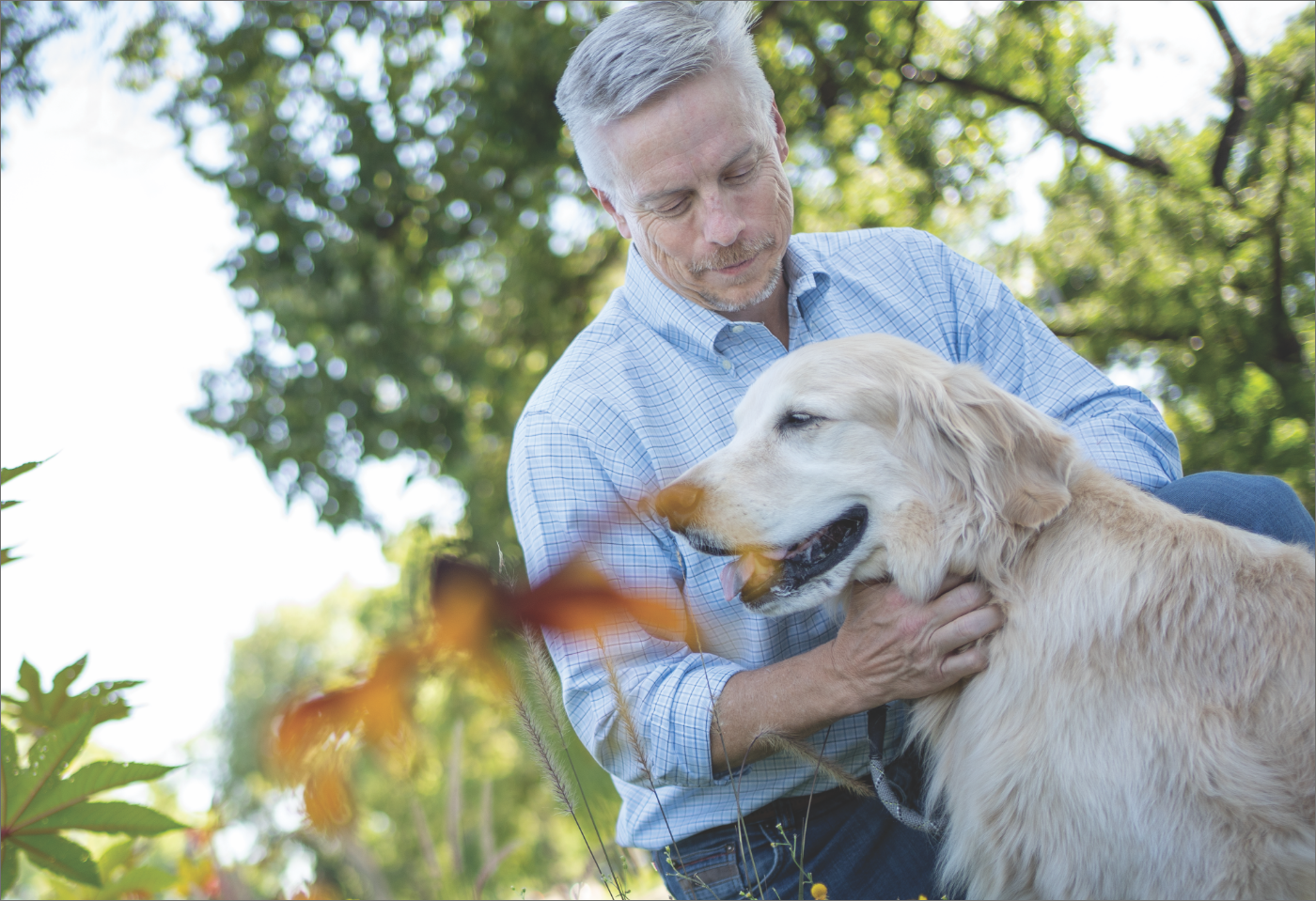Veterinarian and entrepreneur David Haworth ’90 is making advances in cancer treatment more accessible for pets.
A Dog's Best Friend
Veterinarian and entrepreneur David Haworth '90 is making advances in cancer treatment more accessible for pets
October 15, 2023
By
Noah Robertson '19
Dr. David Haworth ’90 lives in Denver with his wife, Claudia Bellinger Haworth ’90, and two golden retrievers. One is Breckenridge, a 2-year-old girl. She’s cute. She knows she’s cute.
The other is Bridger, a 10 1/2-year-old boy. He’s cute, but an older, more companionable cute. “Lots of quirks but mostly laudable ones,” Haworth says of him.
Bridger was also dog No. 1199 in the Golden Retriever Lifetime Study, which Haworth ran at the Morris Animal Foundation, a charity. Haworth wrote a blog post about his dog’s participation in 2014, the study’s third year.
“My 16-month-old furry child is a hero for all dogs,” he wrote. “While it is nothing I want to think about while my golden boy is lying on my feet, in time every one of these beautiful animals will get sick and eventually, pass away.”
Studying Bridger and the others in the survey may help scientists prevent, spot and treat dog diseases, potentially allowing pets to lead longer and healthier lives. For more than 10 years, researchers took blood samples, measured his weight, sequenced his DNA and ran other tests. It was the longest, most comprehensive study ever finished in veterinary medicine, Haworth says.
By 2019, Haworth had left Morris and was working on a Phoenix-based startup: Vidium Animal Health. Its mission is to screen and treat dog cancers, using scientific advances in human cancer treatment.
Bridger, at that time, was working as a therapy dog with Claudia. It was a fitting role. Bridger is the most empathic dog Haworth’s ever seen — the kind that can walk into a room and sense the person that needs him most.
Claudia and Bridger would visit the Phoenix Children’s Hospital and walk through rounds with the nurses. Half an hour later, those nurses would sit with him on the break room floor, letting out a good, cleansing cry.
That fall, as Haworth worked on a business plan for Vidium, Bridger was diagnosed with a mast cell tumor. It’s the most common form of skin cancer in dogs, and outcomes vary widely. If caught early, the dog can live for years. If caught late, the dog might only have months.
In keeping with his work on the golden retriever study and throughout his career, Haworth was founding this company to treat dogs with cancer. But would his own dog — who had spent his life helping others — make it?
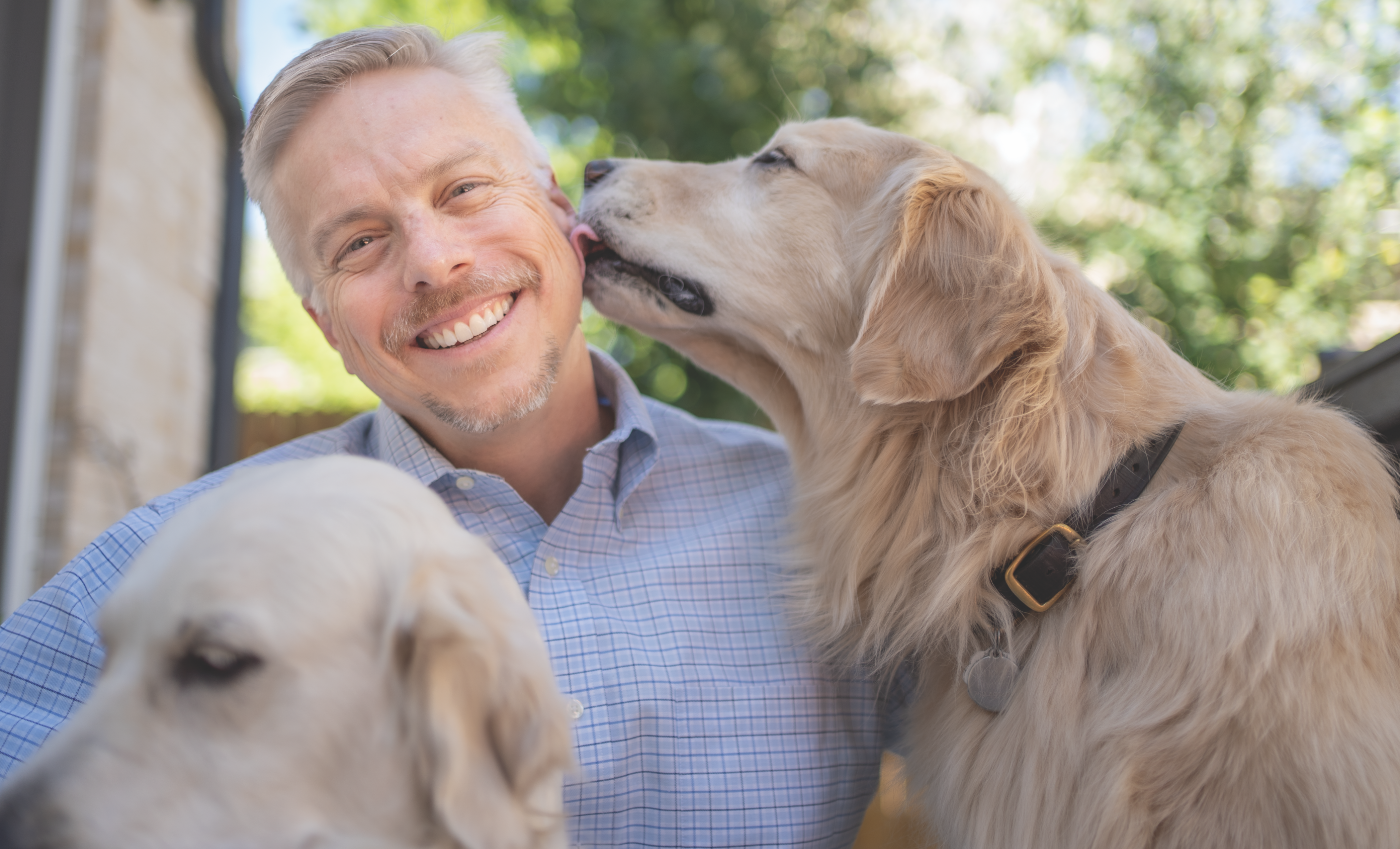
Cassowary Dundee
The two-word version of Haworth’s career follows his name on a business card. They’re his degrees: doctor of veterinary medicine (DVM) and doctor of philosophy in reproductive physiology (Ph.D.).
Haworth is a scientist first. It shapes the way he thinks — in cost-benefit analyses, comparing different kinds of treatment and how much they would cost. And it’s shaped his career, spanning an all-star roster of animal health and welfare organizations, from Pfizer to PetSmart Charities.
Scientist first. Second: animals. They’re what his career, in some ways even his life, has been about.
He cared for outdoor cats — his mother is allergic — while growing up in Tallahassee, Florida. He met Claudia in a class at William & Mary, after she persuaded her professor to let her bring a 10-weekold golden retriever puppy with her. It walked over to Haworth’s chair and started chewing on his hand. “We met when her dog bit me,” the joke now goes.
It’s somewhat ironic that the most important parts of Haworth’s university experience took place inside the classroom. Until his sophomore year in college, his main interests were outside of it. He swam for William & Mary. He was a member of Pi Kappa Alpha fraternity. He was a mediocre student — only a 2.5 GPA, equating to a C- average.
At times that middling college student still shows. Haworth is self-deprecating, speaking much more freely about his family than he does about himself.
It’s an unrepresentative demeanor, given that Haworth hasn’t been below average for decades — not since the summer of his sophomore year.
That summer, one of his biology professors was taking eight students to Australia for a 5,000-mile research trip. Haworth was invited, though he still doesn’t know why. And he said yes.
For six weeks, Haworth and his classmates drove across the continent in a Toyota Land Cruiser — a veritable iron horse with forward-facing front seats and inward-facing rear benches. Haworth doesn’t even remember if they had seatbelts.
During the day, they studied wildlife. At night, they camped. In the country’s north, he fed potato chips to a cassowary — Australia’s bizarre, beautiful and giant flightless bird. At a pub later that night, locals informed him that cassowaries are the most dangerous birds to humans in the world, killing dozens of people each year.
“As usual, I Forrest Gumped my way through it,” he says.
Indeed, he ran, though mostly from his past apathy. Real epiphanies are rare, but that trip was one for Haworth. Years later, his kids would ask for Australia stories — chasing dingos out of the campsite, finding snakes near sleeping bags.
“It was that group of people who showed me that maybe I should apply myself and I could be as cool as these guys,” he says.
Of the eight students on that trip, six got medical degrees, one received a doctorate at Stanford, and Haworth went to veterinary school. His last two years at William & Mary, he earned a 3.7 GPA, he says.
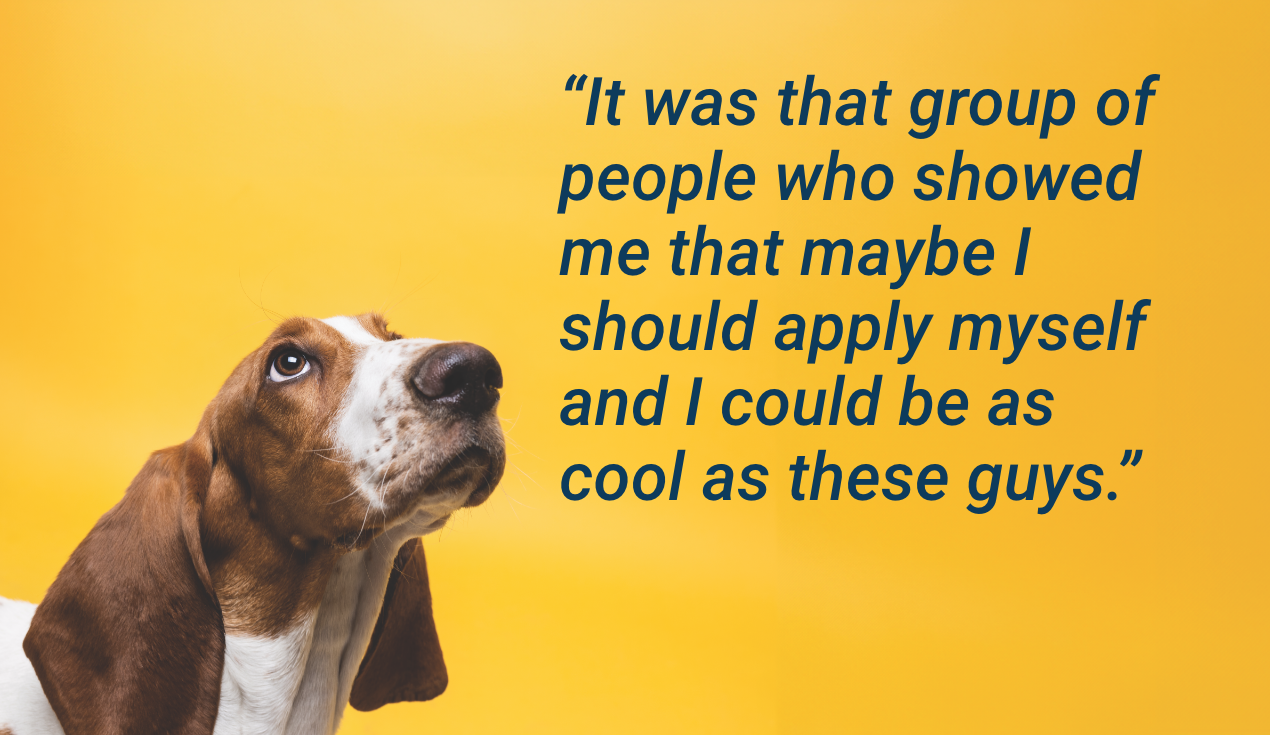
Elementary School
By the time he graduated, Haworth knew he wanted to be a veterinarian. The trouble, still, was his grades. He didn’t have all the prerequisites and veterinary programs then, as now, are highly competitive. At that point there were only 30 programs in the country. Even now there are just 33.
Claudia had been accepted to law school in Denver, so Haworth followed her, after they married in the Wren Chapel. He worked odd jobs — selling suits at Brooks Brothers, bartending — and took his remaining core classes at the local community college. It raised his overall GPA, allowing him to swap lower for higher grades for every additional course he took, per the transcript rules.
Within a couple of years, he was accepted to Colorado State University.
But when he got there, he quickly realized he didn’t want to be a practicing vet. Looking back, it was the monotony, he says. Vet school was like returning to elementary school. He went to classes with the same students in the same lecture halls. The professors would exit and enter. The students stayed. Hence, the chair you sat in on day one became your chair for the semester.
Haworth started to fear the same for his career. He wasn’t ready for the commitment of opening a practice in one city, understanding he might be there for decades.
So he enrolled in a Ph.D. program at his school. Years later, he added a postdoctoral fellowship in cancer therapies for dogs, continuing his growing interest in treating animal diseases.
From there, Haworth’s path was gilded. His LinkedIn page reads like a highlight reel.
One year as a practicing vet in Spokane, Washington, getting tangible experience.
Eleven years at Pfizer Animal Health, rising to become director of business development.
Four years as president and CEO of the Morris Animal Foundation — one of the world’s top funders of animal research. That’s where he adopted Bridger.
Three years as head of PetSmart Charities, which is one of the biggest names in animal welfare.
Years before, he had been struggling with grades. Now, he had three degrees and experience at some of the world’s top firms in his field.

2.8 Billion Characters
The next stop in that list, after a short stint consulting, was Vidium.
Enter Will Hendricks, who lives in Phoenix with a menagerie. Two mixed-breed rescue dogs, two domestic short-hair rescue cats, two pineapple green-cheeked conures, four guinea pigs, some fish and four kids.
The dogs are Jimmy and Jake. Jimmy is a pit bull, chow chow mix, around 12 years old. He was a stray, running down a busy street in Phoenix two years ago nearby. They opened their car door. Jimmy jumped in. They searched for his owner until they realized that was now them.
Jake is a Lab/American Staffordshire terrier mix, about the same age. He has a spotted coat. One of their neighbor’s kids calls him Jake the cow — a cow that likes to bury hot dogs in their backyard. Jake never digs them up.
Hendricks has a doctorate in cellular, molecular and genetic medicine from Johns Hopkins University, the kind of degree that prepares you for the job he held for 10 years: an assistant professor at the Translational Genomics Research Institute. TGEN is a wonky research group based in Phoenix that studies the genetic components of complex diseases such as cancer.
There, Hendricks researched cancers that affected underserved populations, human and animal, including dogs. Several years ago, he and some others sensed that there was a need for the treatment of canine cancers to catch up to the advances in human cancers in the last 20 years.
Human DNA is a long series of letters, and they’re getting increasingly easy to read. The Human Genome Project first successfully cataloged our genetic makeup around the turn of the century, costing billions of dollars. By the early 2000s, the cost of reading the entire human genome dropped into the millions. By 2006, it fell into the thousands, says Hendricks.
Being able to read someone’s genetic dictionary — a process called sequencing — is helpful when treating diseases like cancer. Such diseases are genetic, meaning they’re caused by mutations in human genes. Knowing which genes have mutated is key to treating the cancer, always a balance of killing as many malignant cells and as few healthy ones as possible. Sequencing permits specificity.
These advances in cancer treatment for humans could be useful for animals too, Hendricks reasoned. The human genome is 3.2 billion characters. The canine one is 2.8 billion characters.
“Comparatively, veterinary medicine has been underresourced and understudied,” he says.
They just needed the right team.
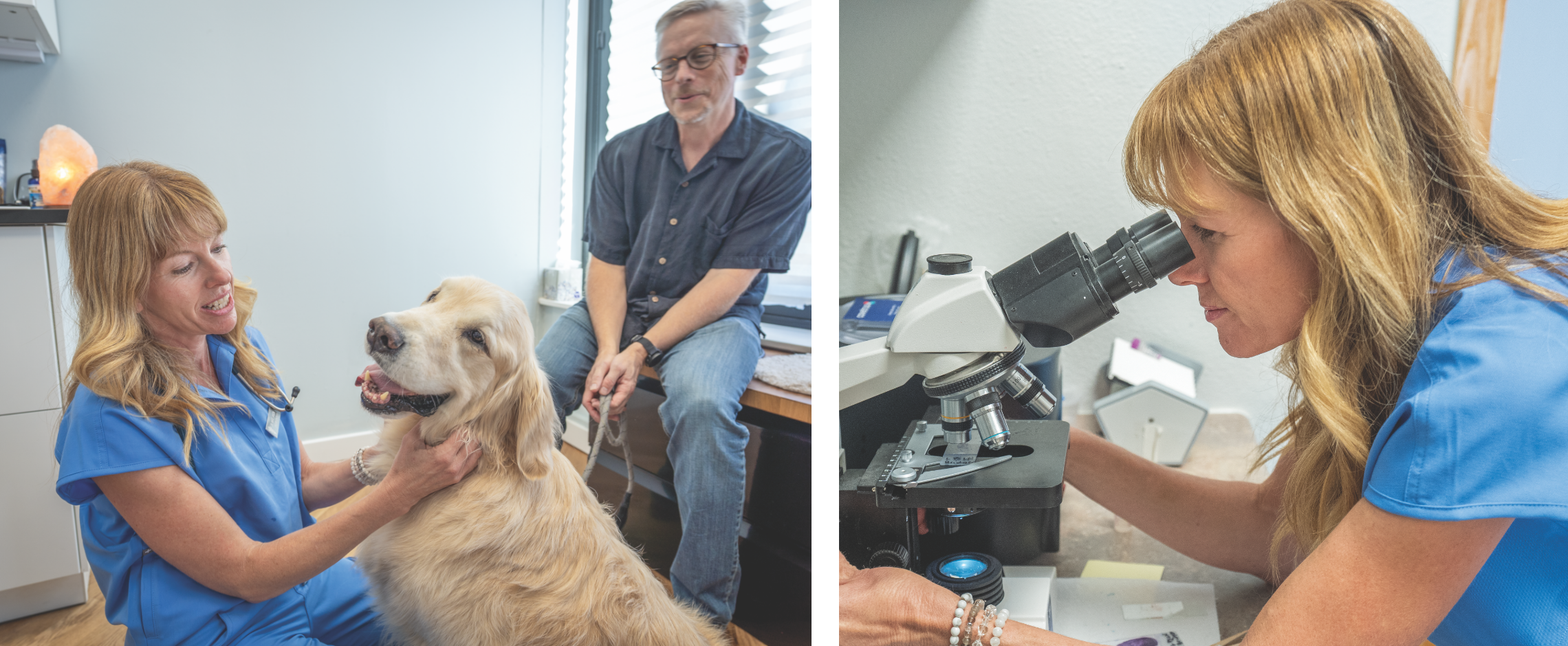
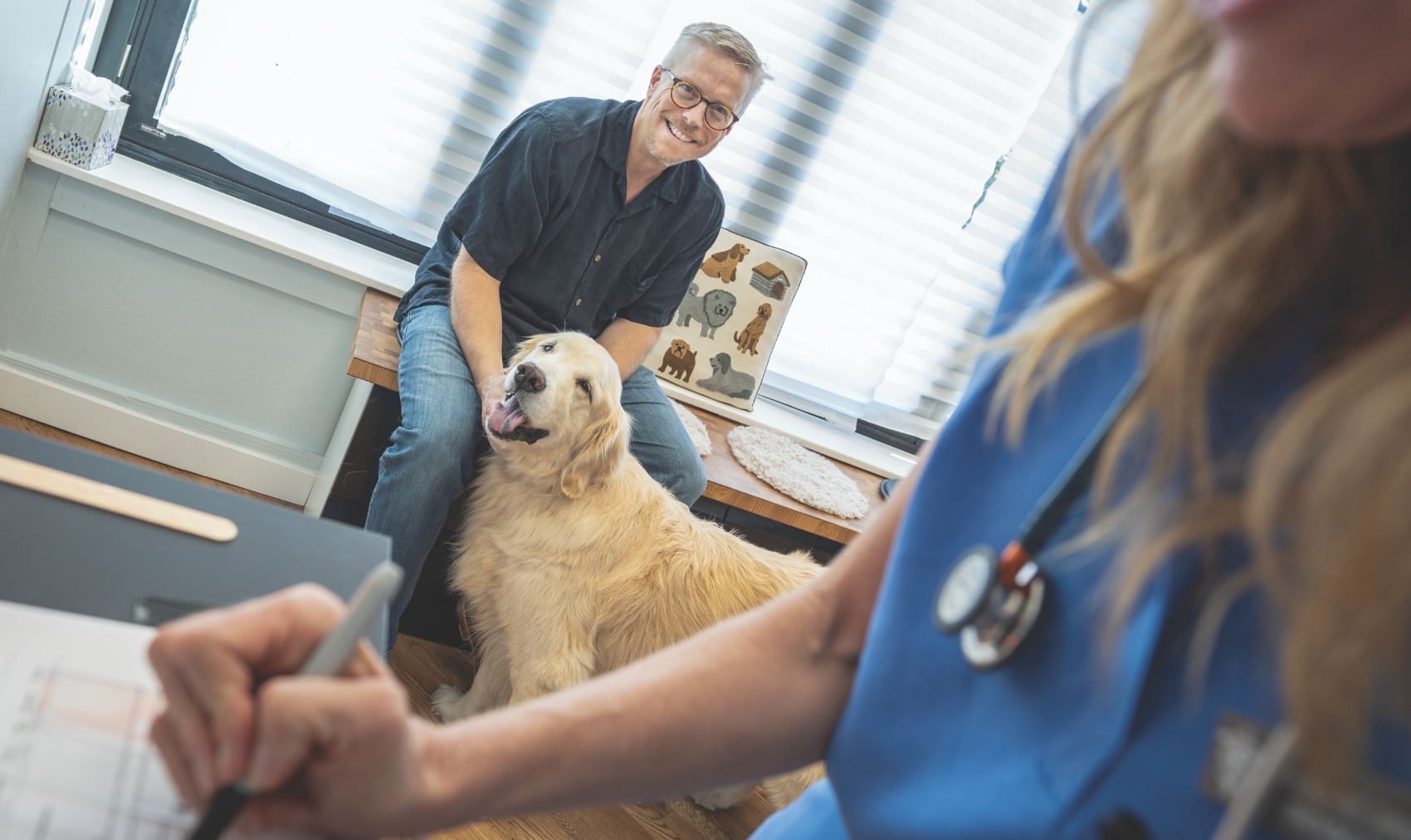
In Which Dogs Bark
Hendricks and Haworth had met several times before, but didn’t plan on working together. That changed when it became clear to Hendricks what kind of person was needed to launch this company: someone with charisma, experience in business and a background in veterinary medicine.
It might as well have been Haworth’s silhouette. He joined the team.
Haworth, Hendricks and Katie Banovich, another co-founder, wrote a business plan and began meeting with potential investors. They had a connection to a major shareholder of the automotive company Carvana, but approached the meeting with caution. This was a handshake meeting, they reasoned. Let’s get some practice pitching our mission.
Five minutes into the presentation, the investor said he liked it.
“How much do you need?” he asked.
Almost in disbelief, Haworth told him. In all, including later funding when Carvana’s stock jumped, the investor contributed $7.5 million.
Vidium has since expanded to 22 employees, with a focus on company culture. For example, when considering potential hires, the interview team asks themselves whether they’d willingly sit next to that person on a trans-Pacific flight. If so, it’s probably a good fit.
Banovich encountered that culture early on when meeting Haworth.
She also lives in Phoenix, with her family and two dogs. Both are Labradoodles, Copper and Caramel. Copper they adopted as a puppy. He’s angsty — she likens him to the shy boy at the playground — and he never leaves her husband’s side. Caramel is a younger sister of his. She is not afraid to get into trouble.
Including when Banovich met Haworth. Her dogs and family were packed into a minivan driving to a family reunion in northern California, and she had a conference call to discuss the business plan.
“It was one of those moments where I was like, ‘OK, everyone has to be absolutely silent,’” she says. “That’s the moment that everyone decides to descend into chaos.”
Her dogs began howling in the back, and as she cringed, Haworth said there was no need to fret. Dogs bark.
“I knew I liked him right away,” she says.
The First Patient
Beside culture, the second pillar of Vidium is science.
Theirs might sound like a familiar story: A health startup promises to better test for life-altering diseases. Not too long ago, the now-defunct testing company Theranos promised similar results, though with almost magical methods. The company was exposed as a sham in 2015.
“The ghost of [Theranos founder] Elizabeth Holmes haunts everyone in our world,” says Haworth.
Along with that history, the Food and Drug Administration regulates medicine for humans but not animals. That makes sense, he says. Pets don’t pay taxes.
But for the companies working in animal health, it adds a higher burden of responsibility. Less oversight can spell more potential for error.
Vidium’s response is transparency, Haworth says. The partners publish tranches of their research and scrutinize each other’s findings. As his history would suggest, it’s science first.
The company’s work builds on the advances in genetic sequencing that first led Hendricks to the project. Vidium has developed a diagnostic test that scans for mutations in 120 relevant genes. Based on the results, they recommend therapies most likely to address those mutations.
“It’s early days for that philosophy in veterinary medicine,” says Haworth. “But it’s gaining traction.”
Dogs have much shorter lifespans than humans do. But they’re increasingly being treated like members of the family — so says a majority of Americans, at least, according to polls.
That changing role for dogs is changing pet owners’ care for them. Dogs are getting ever more human names. The luxury pet food market is growing. “My dogs eat better than I do,” says Banovich.
Hence, when dogs are diagnosed with diseases such as cancer, Banovich says, owners are more likely to seek treatment.
Vidium gained recognition at the 2022 Animal Health Summit in Kansas City, where it received the Innovation Award. The event allows companies to present their products and business plans to a panel of judges and an audience of potential partners.
The company right now is working on a paper comparing the health outcomes for dogs with cancer that have their tumors sequenced versus those that don’t.
For Haworth, it’s a remarkably personal process. When Bridger was diagnosed with cancer, they were still working on the prototype for their diagnostic test.
Bridger became their first patient. They sequenced his cancer, which allowed them to personalize his care. It helped. He went into total remission, and is healthy today. Haworth texted about him last month from his couch, with Bridger sitting at his feet below — just like he did as a puppy.
And Bridger kept working as a therapy dog.
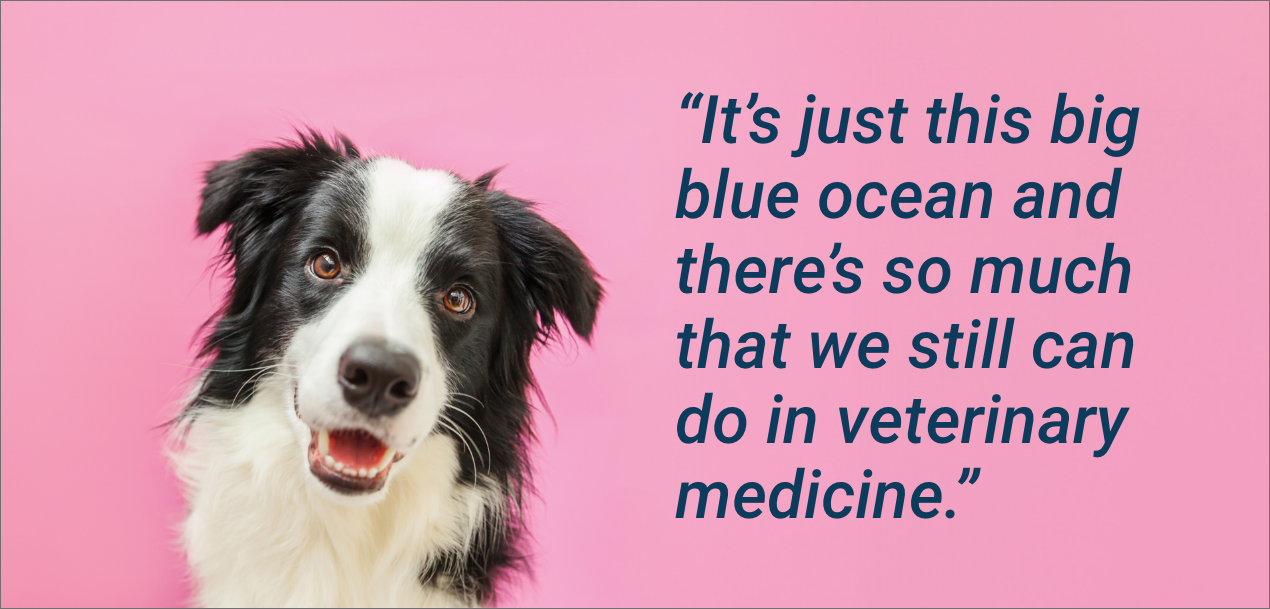
Glowsticks
Banovich’s husband works for TGEN, which is how she was introduced to Vidium. She joined because it was a chance to build something new. She stayed because she came to believe in what they were building.
While she, Hendricks and Haworth were working on the business plan, her 3-year-old son was having back pain. She took him to get an MRI, routine she thought. The doctors found a tumor near his spine.
Soon he was being rushed to emergency surgeries in the hospital. He had three operations in 14 days, going under anesthesia around 15 times. “It was just this whirlwind,” Banovich says.
And he handled it as a 3-year-old would. Sitting in his bright purple room, he started obsessing over glowsticks, asking that the lights be kept off so he could see their green hue. He watched “The Nightmare Before Christmas” almost on repeat the entire time.
At one point, the Haworths visited with a stuffed animal and a children’s book — “The Brave Little Lion.” Banovich was embarrassed when her son threw the book across the room and said he didn’t know who these people were.
“He’s right,” Claudia Haworth said with understanding, and the couple stepped out.
The surgeries were successful, removing almost all the tumor. The family later sequenced it at TGEN, from which they learned that it wouldn’t grow quickly. It became Banovich’s mission to learn everything she could about her son’s condition and how to treat it. She gave a presentation on the specific mutation to Vidium.
“As a mother going through it with my son, the overwhelming feeling I had was helplessness there,” she says. “When I came back to work, it was more of a personal mission to help others.”
Her son is now 7 years old, in full health, a green belt in karate. He still wears the same yellow gown with orange tigers. The family continues to monitor his tumor, taking him back to the hospital where he was treated years ago.
It’s Phoenix Children’s Hospital, the one where Bridger served as a therapy animal.
‘This Big Blue Ocean’
Vidium has two goals going forward, Banovich says: growth and affordability.
There are only 400 or so veterinary oncologists in the country, she says, a number few enough to make them all reachable, but high enough to require persistence. Vidium is going through that process now, Banovich says, trying to make sure the doctors on the front lines of treating dogs know what resources they can offer.
They’ve been successful, as this writer observed at a reception in Washington late this summer. A nearby veterinarian struck up a conversation, only to hear about this story on Vidium.
“Those guys are awesome,” the veterinarian said.
The other goal is to lower costs, the second part of increasing their reach. Pet owners may be more willing to seek treatment for their dogs, but every decision to do so is difficult.
As a diagnostics company, Vidium could offer more information in that process, helping people understand the severity of their dog’s cancer and improving survival rates in the actual treatment process. That only works, though, if people feel like they can afford it, Banovich says, and they’re trying to make sure that’s possible.
“It’s just this big blue ocean and there’s so much that we still can do in veterinary medicine,” Banovich says.
A big blue ocean, yes, but one that always feels familiar at a company so focused on animal welfare.
Top photo, SMRM1997; Dog photo with yellow quote, Nikola Spasenoski; Dog photo with pink quote, Iuliia Zavalishina
